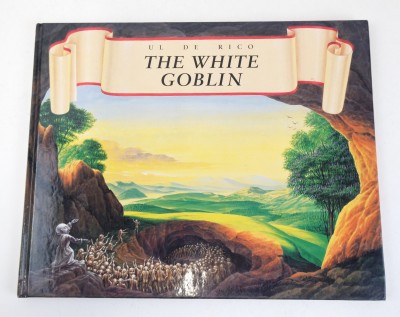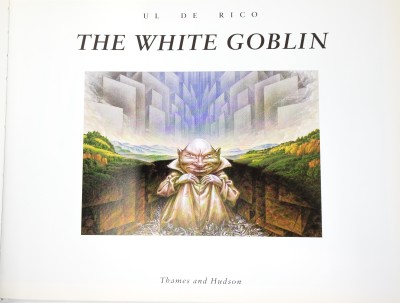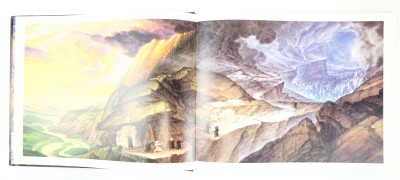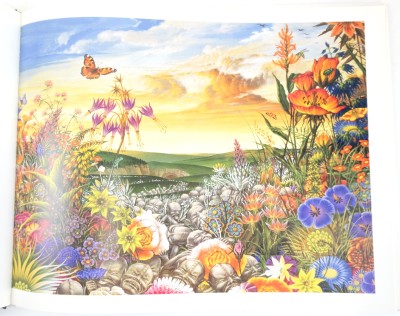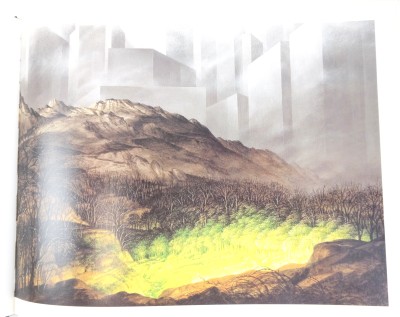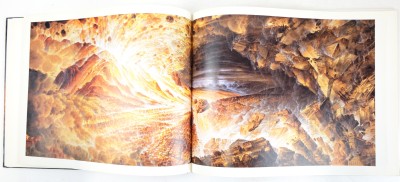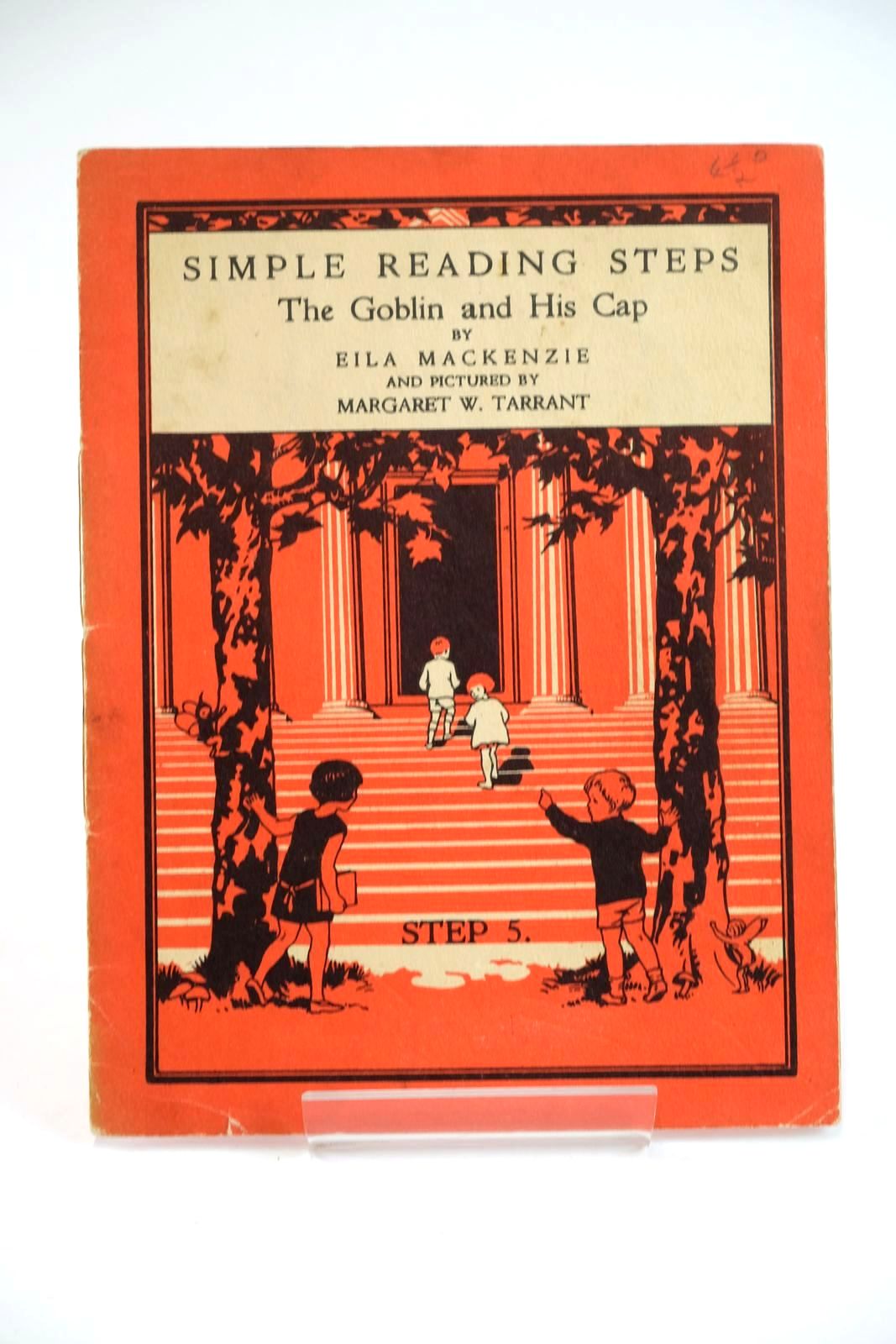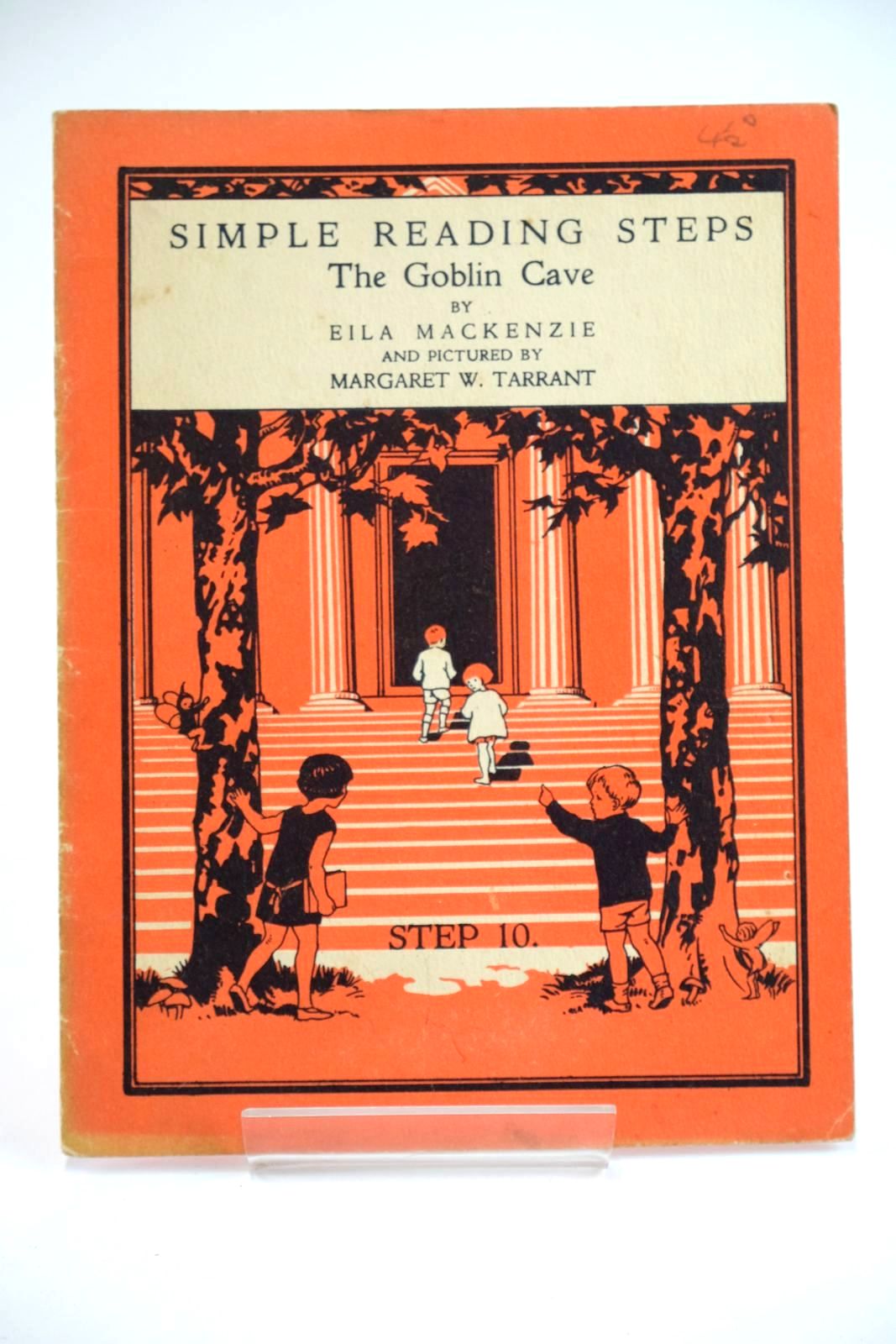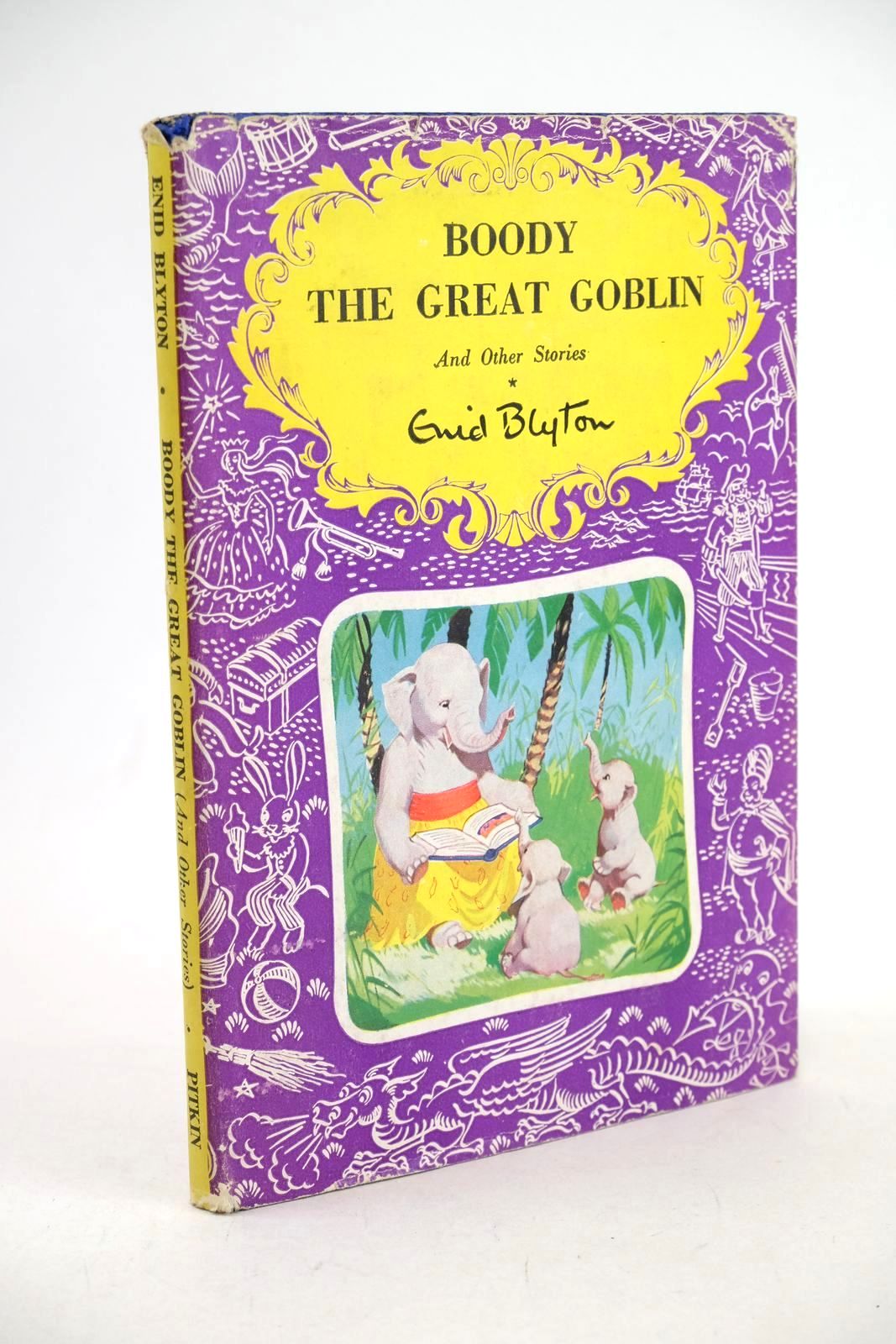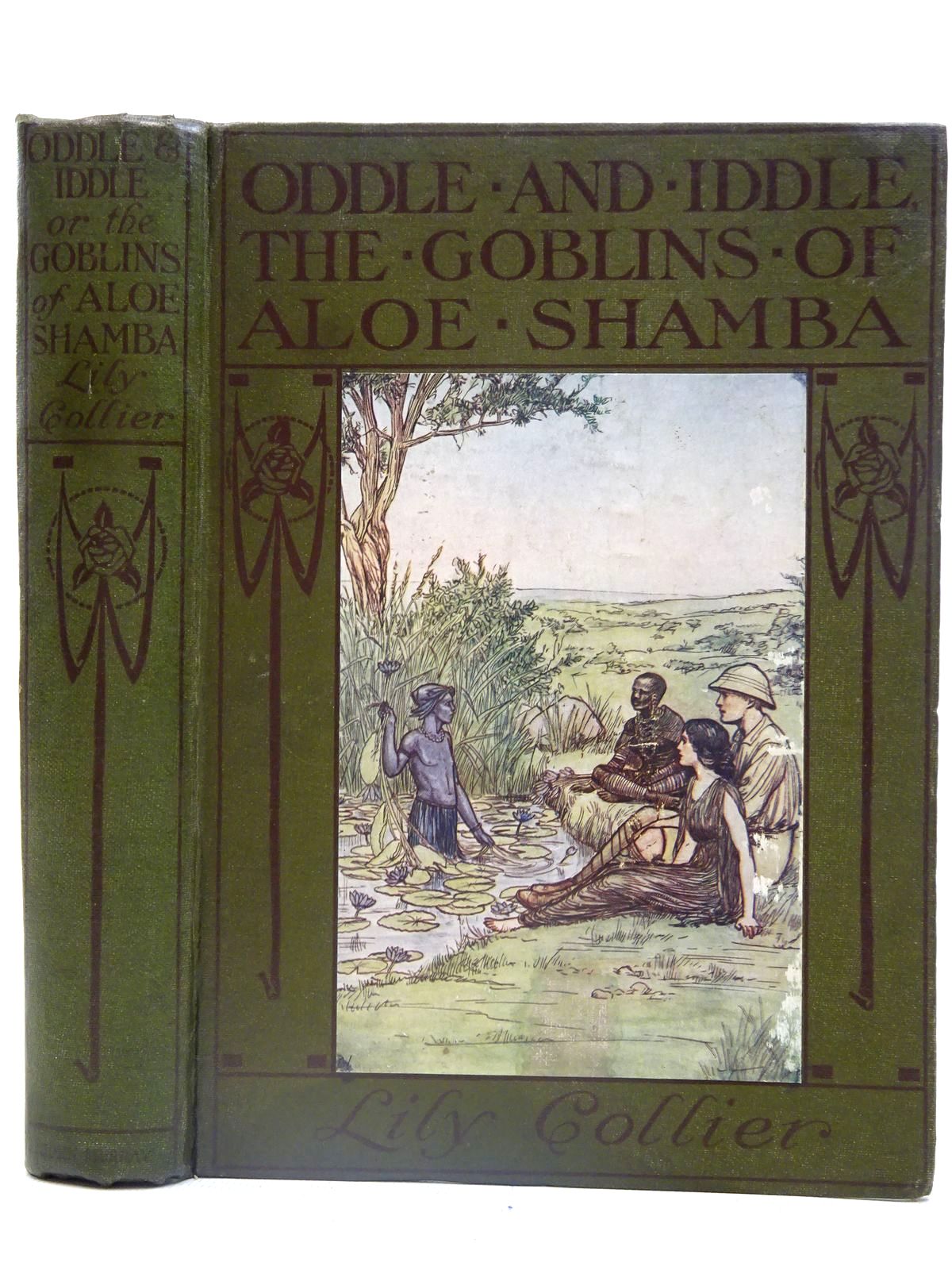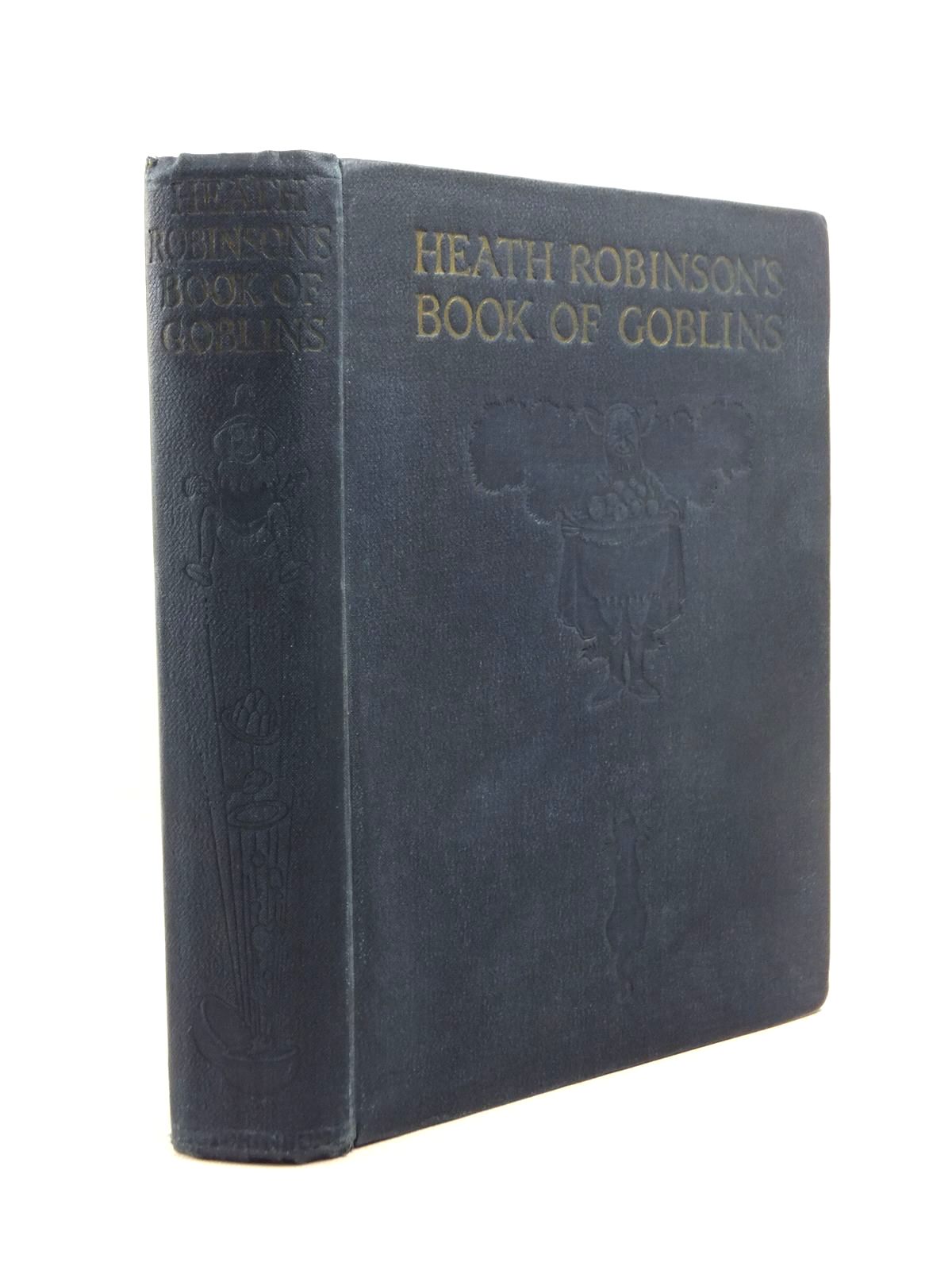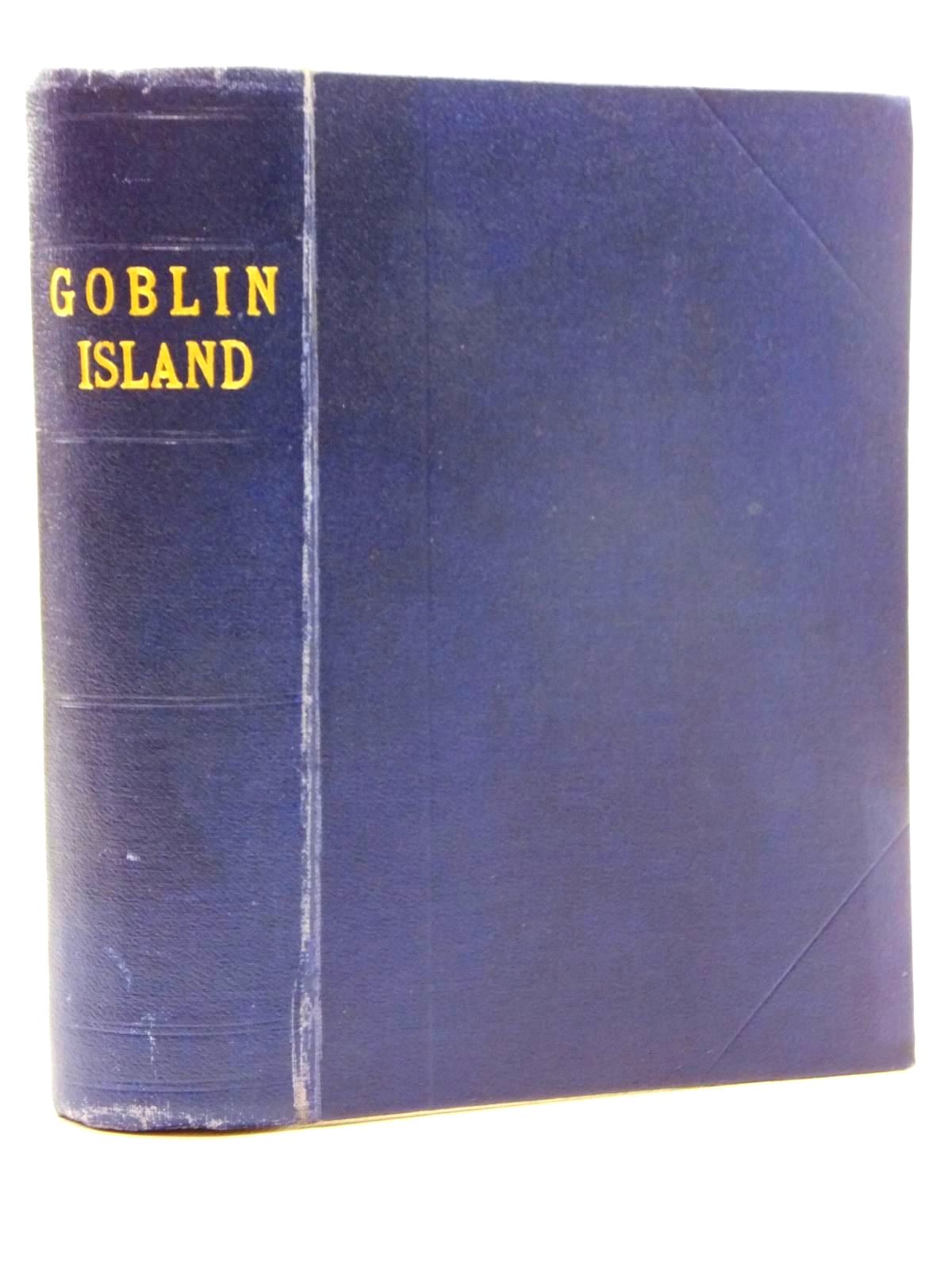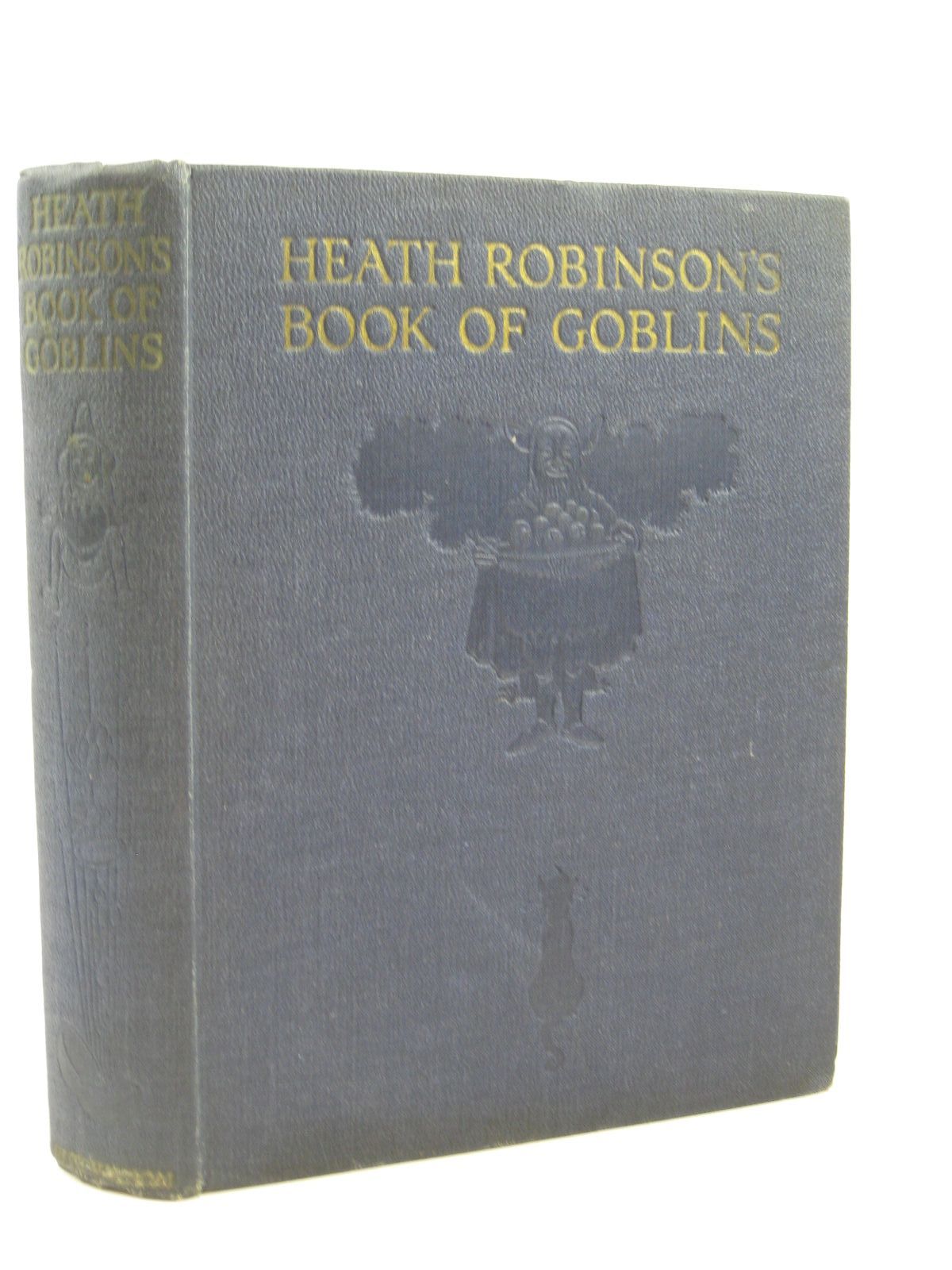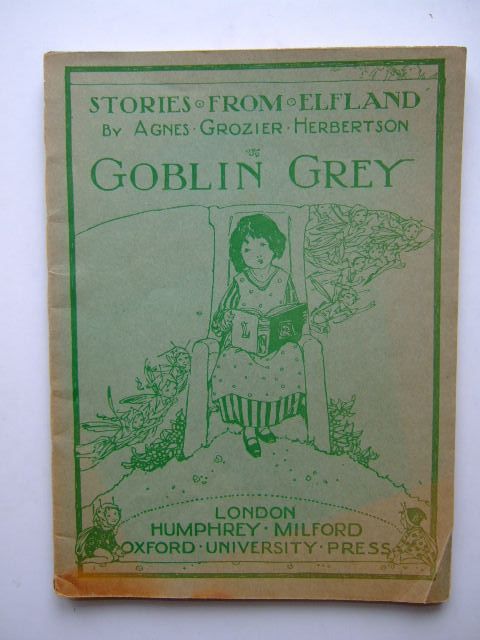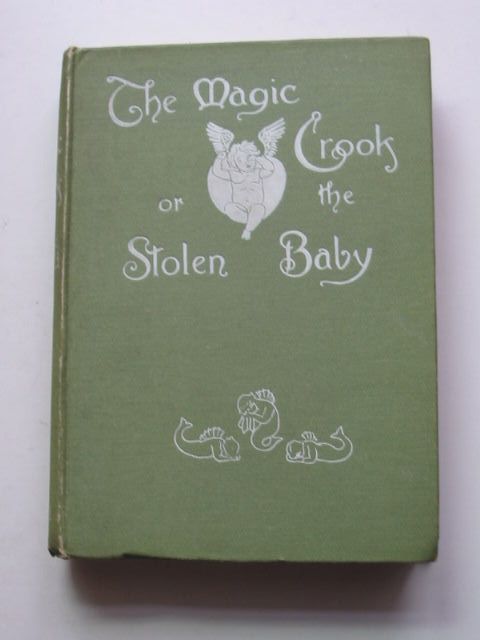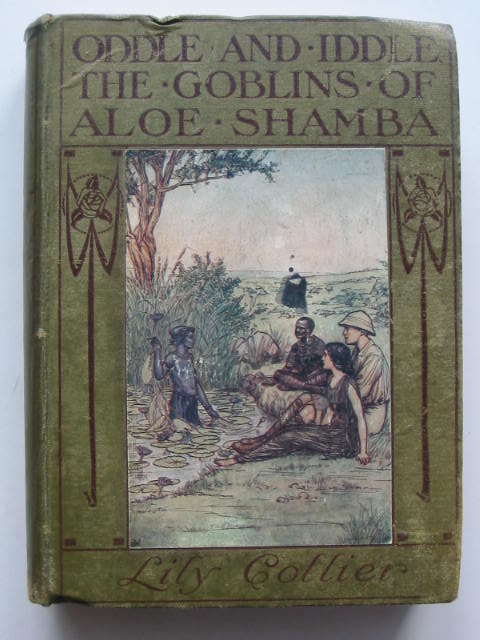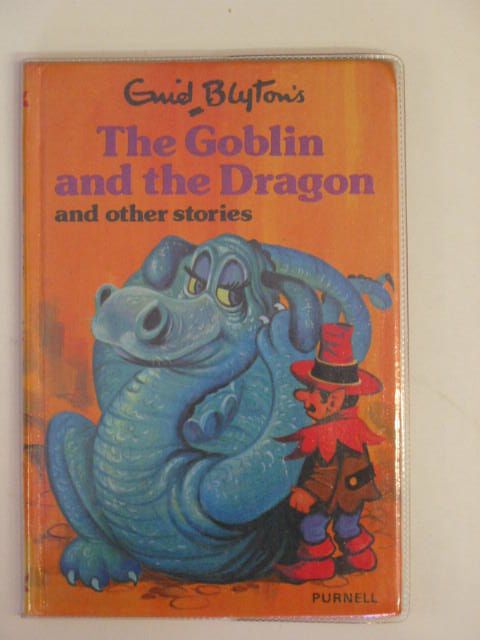The White Goblin
Written and illustrated by Ul De Rico and published in 1996, this is the sequel to The Rainbow Goblins which was published in 1978.
It is a children’s book (probably for older children unlike its predecessor) and the story is about the White Goblin who was banished by his brothers, the Rainbow Goblins, and lives in a world of snow and ice. After learning of his brothers’ ignominious death, he wonders, “who am I to be thrust out of the beautiful, coloured world” and goes on a very selfish colour-drinking rampage. He greedily catches, licks and sucks every colour he can reach. He then self-righteously decides that he is now the ruler of the world and descends into the Cave City and persuades the Cave Goblins (living in peace, harmony and happiness at this point) to help him build gigantic buildings and cities.
The Cave Goblins obviously love the feast of colours that lay before them on the surface of the earth and soon begin to devour all that is before them. They get busy and build great cities, but poor nature increasingly loses its colours and illness becomes evident around them. They continue to devour the colours of the world and then nature simply ceases to exist. However, the Cave Goblins now produce new industrial plants in order to produce artificial colours and quench their thirst.
The White Goblin at first watches these activities with astonishment but then with increasing alarm. Homesickness finally drives him back to his glacier world which has escaped the Cave Goblins’ grasp since there were no colours to entice them, and here he lives out his last years, serene and contented.
The Cave Goblins come to a point where they are now annihilating each other, feelings of respect and love have died out and now hatred and envy lead to violence and wars. It goes so far that one night the crust of the earth tears open and everything that the Cave Goblins have invented is destroyed by rivers of fire, glaciers and floods.
Only a very few goblins manage to save themselves. These now suddenly understand that the more they strive for pleasure, power and wealth, the more quickly they lose the feelings that sustain life. This group are now unable to find any colour in their world at all. Reaching for each other’s hands with their strength fading and their eyes about to close again, their memory of a better time reawakens a cloud of colour and wonderful, fragrant nature is revived!
Although we aren’t told in words, the pictures do indicate that nature flourishes once more and we can assume that the remaining Goblins actually have a happy ending!
For me, reading this story makes me feel quite uncomfortable as it feels a little too familiar. The story was written and illustrated 27 years ago but I find that it is practically describing things as they are in the world today. Perhaps it is my over-active imagination? Then again, maybe not.
Count Ul de Rico was an Italian-born artist and author of illustrated children's books, most notably The Rainbow Goblins and its sequel The White Goblin. He was also a major artistic contributor to the children's fantasy film ‘The NeverEnding Story’, based on the book of the same name by Michael Ende.
His paintings carry a slightly surreal theme which allows readers to be drawn into their colourful imaginary world while still being reminded of the beautiful natural world which inspired them.
Contributed by Maria
(Published on 15th Nov 2023)


